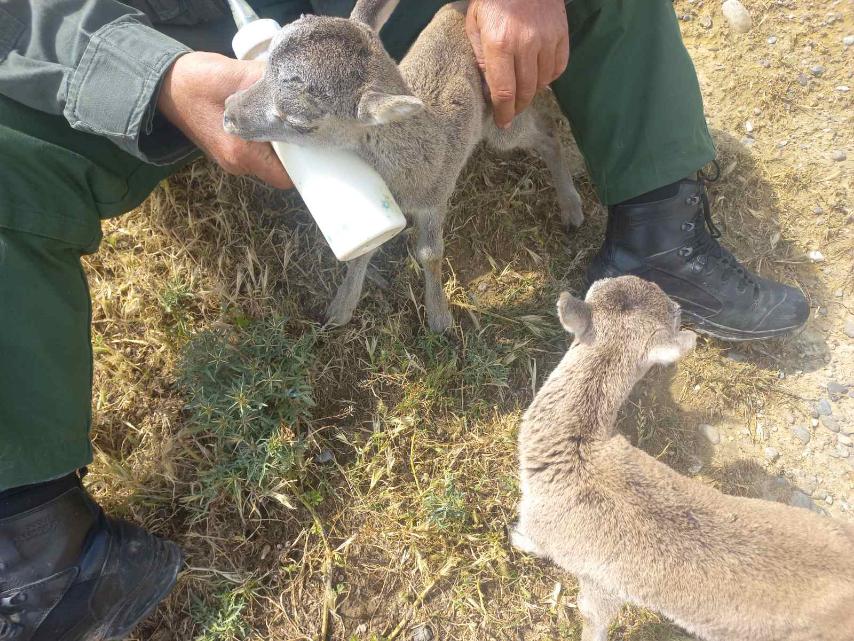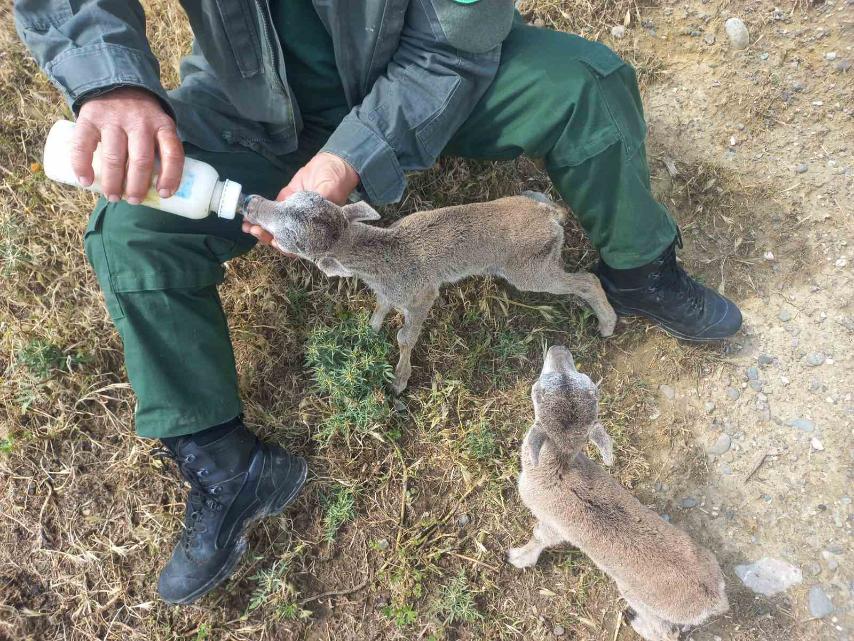Wildlife services say they probably haven’t been orphaned and you will harm their chance of survival
As spring ushers in the breeding season, the serene outskirts of the Paphos forest and the rugged terrain of Troodos witness the arrival of solitary newborn moufflon, a hallmark of Cyprus’ natural beauty. Yet, this heartwarming scene carries a cautionary tale.
The game and fauna service is sounding the alarm over well-meaning interventions by individuals who believe they are rescuing orphaned newborn animals but are inadvertently endangering wildlife.
These lambs, usually seen by themselves unless they are twins, are typically safe according to the senior game and fauna service officer Nikos Kassinis. He explains that the female moufflon leaves her lamb for many hours alone to forage and meet the demands of nursing.
However, human presence can trigger the mother’s protective instincts leading her to hide and leaving the newborn alone.
Recent incidents, where passersby mistook solitary lambs as orphaned and intervened, underscore the unintended consequences of such actions. Last week, there were two instances when people walking on nature trails found a lamb, and mistakenly thinking it was an orphan, transferred it to the wildlife services.
“People had good intentions but unwittingly condemn endangered wildlife species to a lifetime of captivity,” Kassinis said, explaining that because many hours had passed, when attempted to take the newborn animal back it was too late. “The mother never returned,” the wildlife officer said, emphasising the importance of leaving lone newborn moufflon undisturbed in their natural habitat.
Currently, the endangered animals from Pedoulas and Troodos, have been taken to the wildlife rehabilitation hospital in the capital since they need round-the-clock care.

Bottle feeding eliminates the possibility of them being released back to the wild ever again because they become human dependent.
“They need to feed approximately every three hours. This is labour intensive but also eliminates the possibility of them being released back to the wild ever again because they become human dependent,” Kassinis said.
However, their survival is not guaranteed.
If they do, as they mature, they will likely end up in a zoo, or other enclosed wildlife facilities such as the large wildlife rehabilitation hospital currently under construction in Geri, Kassinis said.
This is because disrupting the crucial bond between newborns and their mothers, compromises their survival instincts. “They lose the fear of humans which is their biggest tool for survival [in the wild],” the wildlife officer stressed.
And this is not an isolated incident, as the game and fauna representative said the service receives newborn wild animals almost every year.
The advice is clear: most lone newborns are not orphaned and should be allowed to remain undisturbed in their natural habitat. Moreover, moufflon lambs raised alongside their mothers exhibit markedly higher rates of survival than those raised by humans under specific circumstances. Shockingly, literature reveals an alarming 85 percent likelihood of mortality within three months of release for moufflon lambs raised and nurtured in captivity, as reported by the game and fauna service.
Considering these stark realities, the best course of action is to refrain from intervening with newborn moufflons under any circumstances. Attempts to feed or capture them may not only disrupt their natural development but also attract predators and deter the mother from returning to care for her offspring. Thus, the wisest decision is to allow these delicate creatures to thrive undisturbed, with everyone, including pets, keeping a respectful distance.
When encountering a newborn moufflon in the wild, assessing its condition is crucial to determine if it requires assistance. Several indicators can help discern whether the young moufflon is injured or orphaned and are listed by the game and fauna service.
Firstly, its vocalisations play a significant role; occasional calls for its mother are normal, but continuous calling throughout the day may signal orphaning. Secondly, the presence of parasites is common in young moufflons, but an excessive burden or signs of distress, such as swollen eyes from bites, could indicate orphaning.
Additionally, observing the posture of the moufflon is informative. A healthy one typically rests with its legs tucked beneath its body, while a weakened or dehydrated orphan may be unable to stand or lift its head. Lastly, assessing for injuries is crucial; while minor wounds may heal independently, severe conditions like profuse bleeding or broken bones necessitate intervention.
Should any of these signs be observed, contacting wildlife services with comprehensive details about the moufflon’s condition and location is advised for appropriate assistance.
With the Cyprus moufflon (Ovis gmelini ophion) being an endangered subspecies unique to the island, preserving their natural behaviours and habitats is paramount to their survival.







Click here to change your cookie preferences